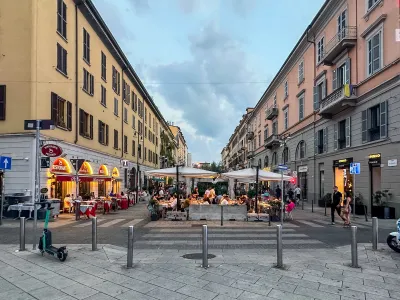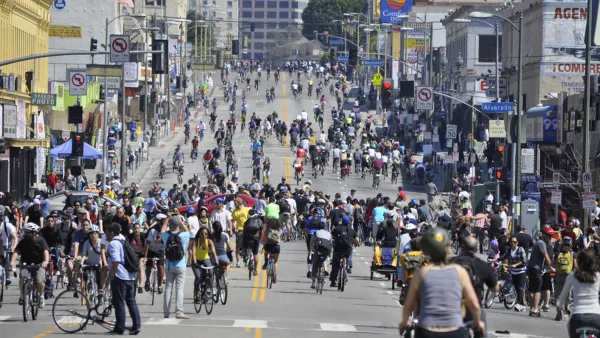The Covid era highlighted social inequities and prompted new paradigms for urbanism and mobility. Will they stick around?

How will urban design and mobility change in the post-COVID city? Scott Shepard shares his thoughts, noting that “After the initial shock and subsequent waves [of the pandemic], a new way of thinking began to quickly take hold.”
Cities around the country and the world began looking for ways to reverse decades- and centuries-old urban design paradigms, spurred both by changes wrought by the pandemic and by the threats of climate change. “This, along with public policies and investments in shared and active modes and a decarbonization of the transport sector collectively pointed towards a brighter future, and one decoupled from the 20th century modernist, car centric urban paradigm.”
Shepard sees promise in the reorganization of society forced by the pandemic and the changes that are persisting as the pandemic winds down. “Much is still needed to be done to help promote and develop in this manner, such as the 15 Minute City and new initiatives to help people take back control of public spaces from the automobile through tactical urbanism and DIY projects. However, this unprecedented era we live in is cause for celebration of our cities, and the potential they bring to a better quality of life for all groups and communities.”
FULL STORY: Urbanism & Mobility in the Post-COVID City

National Parks Layoffs Will Cause Communities to Lose Billions
Thousands of essential park workers were laid off this week, just before the busy spring break season.

Retro-silient?: America’s First “Eco-burb,” The Woodlands Turns 50
A master-planned community north of Houston offers lessons on green infrastructure and resilient design, but falls short of its founder’s lofty affordability and walkability goals.

Delivering for America Plan Will Downgrade Mail Service in at Least 49.5 Percent of Zip Codes
Republican and Democrat lawmakers criticize the plan for its disproportionate negative impact on rural communities.

Test News Post 1
This is a summary

Test News Headline 46
Test for the image on the front page.

Balancing Bombs and Butterflies: How the National Guard Protects a Rare Species
The National Guard at Fort Indiantown Gap uses GIS technology and land management strategies to balance military training with conservation efforts, ensuring the survival of the rare eastern regal fritillary butterfly.
Urban Design for Planners 1: Software Tools
This six-course series explores essential urban design concepts using open source software and equips planners with the tools they need to participate fully in the urban design process.
Planning for Universal Design
Learn the tools for implementing Universal Design in planning regulations.
EMC Planning Group, Inc.
Planetizen
Planetizen
Mpact (formerly Rail~Volution)
Great Falls Development Authority, Inc.
HUDs Office of Policy Development and Research
NYU Wagner Graduate School of Public Service



























